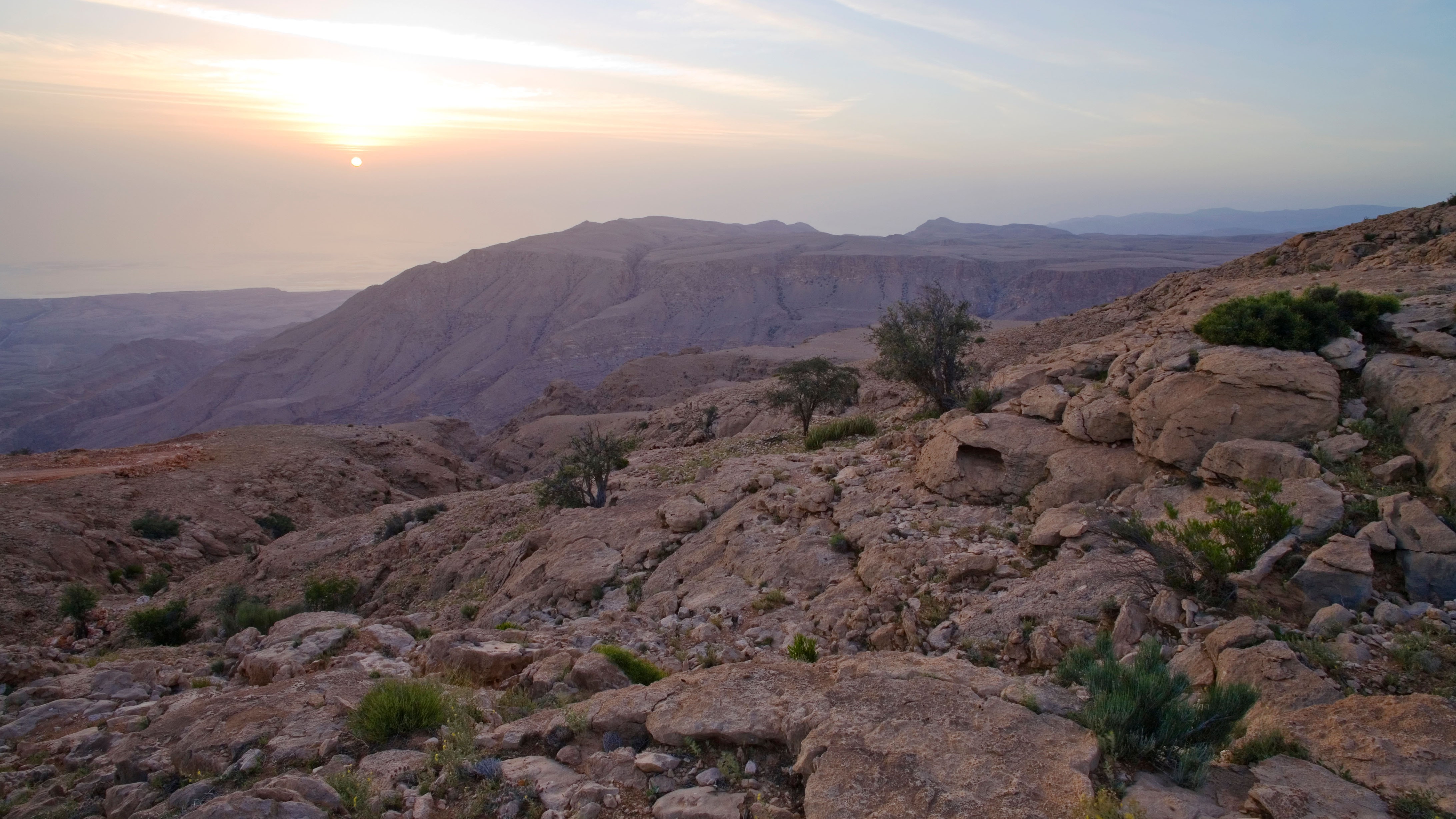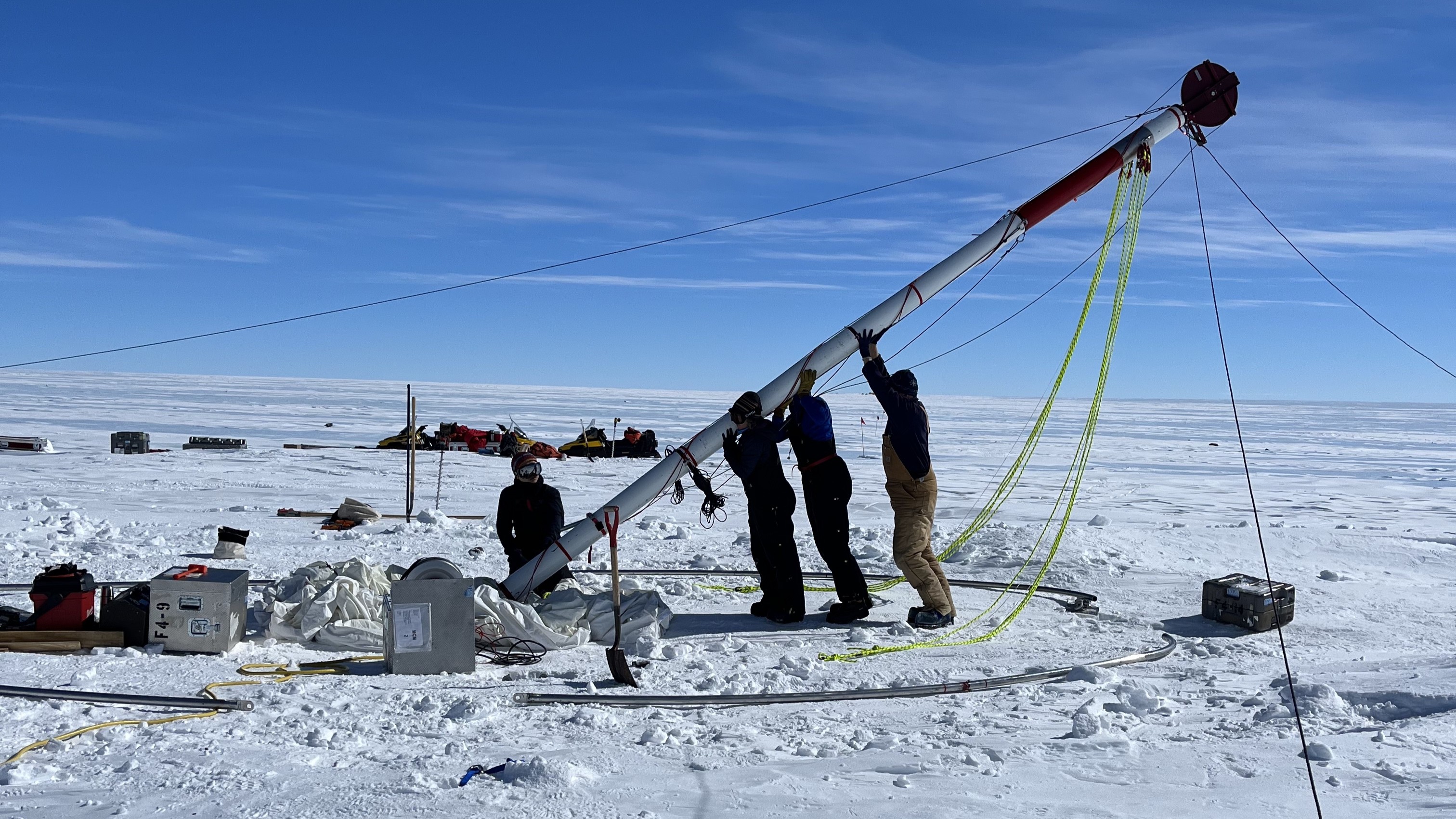There's a 'ghost' plume lurking beneath the Middle East — and it might explain how India wound up where it is today
Researchers have discovered an unusual plume of magma beneath Oman that may have changed the course of the Indian tectonic plate between 25 million and 40 million years ago.

Scientists have discovered an ancient "ghost" plume lurking beneath Oman.
The magma plume is trapped beneath a thick portion of Earth's crust and the upper part of the mantle, the planet's middle layer. As a result, the material can't rise to trigger volcanic activity at the surface. Researchers don't know if the plume ever sparked eruptions, but evidence suggests it shifted the trajectory of the Indian tectonic plate during its collision with Eurasia tens of millions of years ago, according to a new study.
The plume sits beneath Oman's Salma Plateau (also spelled Salmah and Selma), which is up to 6,600 feet (2,000 meters) high, said study lead author Simone Pilia, a geophysicist and assistant professor at King Fahd University of Petroleum and Minerals in Saudi Arabia. The plateau likely formed because of the plume, although some scientists link the plateau's formation to the bending of Earth's crust created by the Makran subduction zone off the coasts of Pakistan and Iran, Pilia told Live Science.
"A plume is hot material that wants to rise, rise, rise — so it's underneath and it's pushing up, creating topography," Pilia said. "The uplift [at the Salma Plateau] is rather small, but it's still there. It's telling you that the plume is active."
Researchers discovered the plume thanks to seismic waves, or sound waves that travel through Earth at different speeds depending on the chemical makeup of the material. Oman has a dense network of stations that record seismic data, which made the research possible, Pilia said. He named the plume "Dani" after his son.
Related: Africa is being torn apart by a 'superplume' of hot rock from deep within Earth, study suggests
The Dani plume is the first clear example of an amagmatic "ghost" plume — a term the study authors coined to describe mantle plumes that don't trigger volcanic activity. Mantle plumes originate from the core-mantle boundary roughly 1,800 miles (2,900 kilometers) beneath Earth's surface. These plumes typically fuel volcanic eruptions because they undergo a process called decompression melting as they rise through the mantle and crust.
Get the world’s most fascinating discoveries delivered straight to your inbox.
Many mantle plumes trigger volcanic eruptions in the middle of oceanic plates, including in Hawaii, Pilia said. But mantle plumes rarely trigger eruptions within continental plates; they can't rise or undergo decompression melting because they continental plates a thicker crust and upper mantle than oceanic plates do.
Researchers have generally assumed that the lack of volcanism from mantle plumes in continental plates means that there are no mantle plumes beneath continental plates, Pilia said. But "absence of evidence is not evidence of absence," he said. "If you don't have surface volcanism, it doesn't mean that you don't have a plume."

The Dani plume is proof that mantle plumes can exist without volcanic activity. "What we strongly believe is that there are many other ghost plumes that we don't know of," Pilia said.
Africa is a good candidate for ghost plumes because it sits above one of Earth's two large low-shear-velocity provinces — continent-size blobs that protrude from the core-mantle boundary and feed plumes. Like Oman, Africa has regions with a very thick crust and upper mantle, so any plumes would be prevented from rising to the surface, Pilia said.
"What we strongly believe is that there are many other ghost plumes that we don't know of."
The Salma Plateau is around 40 million years old, which means the Dani plume is at least as ancient, according to the study, which was published online June 6 in the journal Earth and Planetary Science Letters. This timing coincides with the collision between the Indian and Eurasian plates — and this got the researchers thinking, Pilia said.
The collision happened relatively close to what is now Oman, before the two plates moved northward to their current positions. Pilia and his colleagues reconstructed the trajectory of the Indian plate and found that it changed direction slightly between 40 million and 25 million years ago.
"We made some other calculations and basically demonstrated that the shear stress produced by the plume was the reason for the change in azimuth [angle] of the Indian plate," Pilia explained.
Researchers already knew that plumes can redirect tectonic plates — but until now, without knowledge of the Dani plume, they hadn't tied this shift in trajectory to a specific plume.
Tectonic plates move, but plumes tend to stay in place, Pilia said. This means that scientists can sometimes trace the evolution of a plume through evidence left on tectonic plates as they move over the plume.
However, in the case of the Dani plume, this evidence has been swallowed and erased by the Makran subduction zone, Pilia said. "That evidence is gone forever."
What's inside Earth quiz: Test your knowledge of our planet's hidden layers

Sascha is a U.K.-based staff writer at Live Science. She holds a bachelor’s degree in biology from the University of Southampton in England and a master’s degree in science communication from Imperial College London. Her work has appeared in The Guardian and the health website Zoe. Besides writing, she enjoys playing tennis, bread-making and browsing second-hand shops for hidden gems.
You must confirm your public display name before commenting
Please logout and then login again, you will then be prompted to enter your display name.
